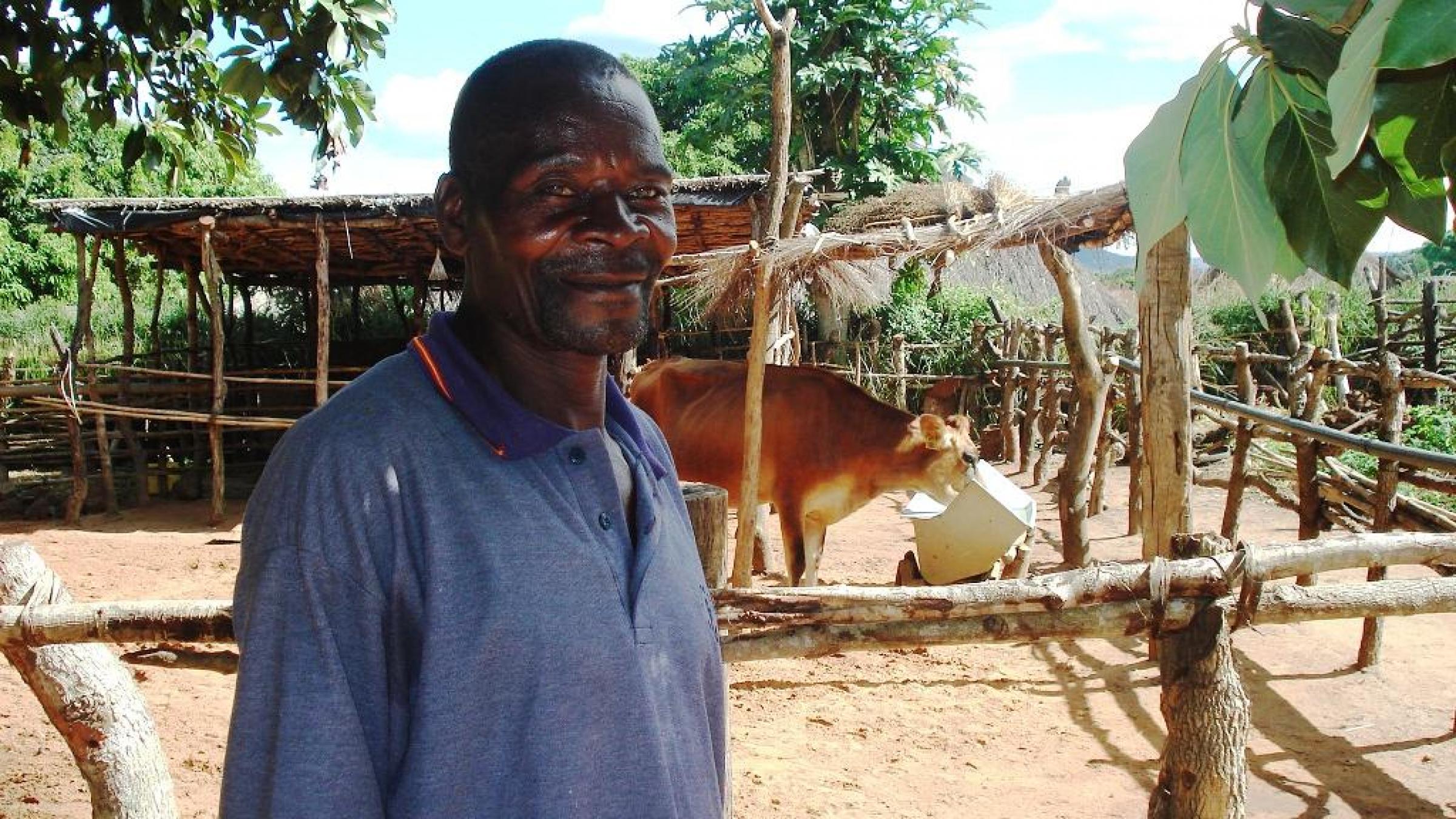Creating a Sustainable Dairy Industry in Mozambique

Sabado Josè Maria, a former crop farmer in Mozambique, has more than doubled his income thanks to support and training he received in a USDA-funded Land O’Lakes dairy project.
A partnership between the U.S. Department of Agriculture (USDA) and Land O’Lakes International Development has helped revive a Mozambique dairy farming tradition and raised small-scale farmers’ monthly incomes by an average of 225 percent.
Land O’Lakes, with the help of USDA’s Food for Progress Program, set out to rebuild the dairy herd and create a sustainable dairy value chain in the Manica Province. The province had historically been one of Mozambique’s best areas for livestock farming due to its climate and access to multiple markets. However, the cattle population in the province and country declined significantly during Mozambique’s 15-year war. As a result, Mozambique began importing 90 percent of its dairy product needs. In addition, farmers replaced livestock production with small-scale crop production, which did not provide a consistent source of income.
USDA provided Land O’Lakes with U.S. wheat, which they then sold, or monetized, in Mozambique. Land O’Lakes used the $4 million in proceeds to distribute 398 dairy cows to 265 farmers over a three-year period beginning in 2009. The Land O’Lakes project provided training in feed and fodder techniques, pasture management, milk collection and marketing, and animal husbandry. It also showed farmers how to increase productivity by using the cattle to cultivate crops; set up three milk collection, processing, and distribution centers; and helped establish 11 registered dairy associations and three registered dairy cooperatives.
The results are impressive. Farmers who once earned an average of $37 per month from crop farming are now earning an average of $106 per month from dairy farming. The most successful dairy farmers have tripled their net income to $190 per month. Milk production has increased from zero to an average of 32,000 liters per month or more than 11 liters per cow per day. Farms using cattle to cultivate crops have increased production by more than 7 percent. The number of people directly and indirectly benefiting from this project totaled nearly 347,000 as of December 2011.
“The provincial government has been proud to host the Land O’Lakes dairy project,” said Oliveira Amimo, director of Manica Province’s Department of Agriculture. “It has not only stimulated our province’s past tradition, but has also created jobs and incomes. We hope the dairy project will continue to enhance long-term sustainability and expand to other districts in the province.”
With the provincial government’s recent approval of a strategic plan to make agricultural development and higher herd levels a priority, Director Amimo’s hopes may soon become a reality.
USDA’s Food for Progress Program donates U.S. commodities to government agencies and PVOs, which sell the commodities in targeted developing countries and emerging democracies. The funds are used to introduce and expand free enterprise in the agricultural sector.
